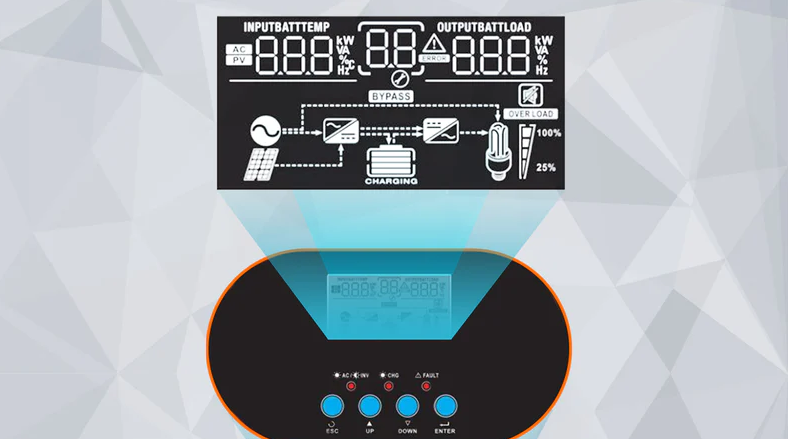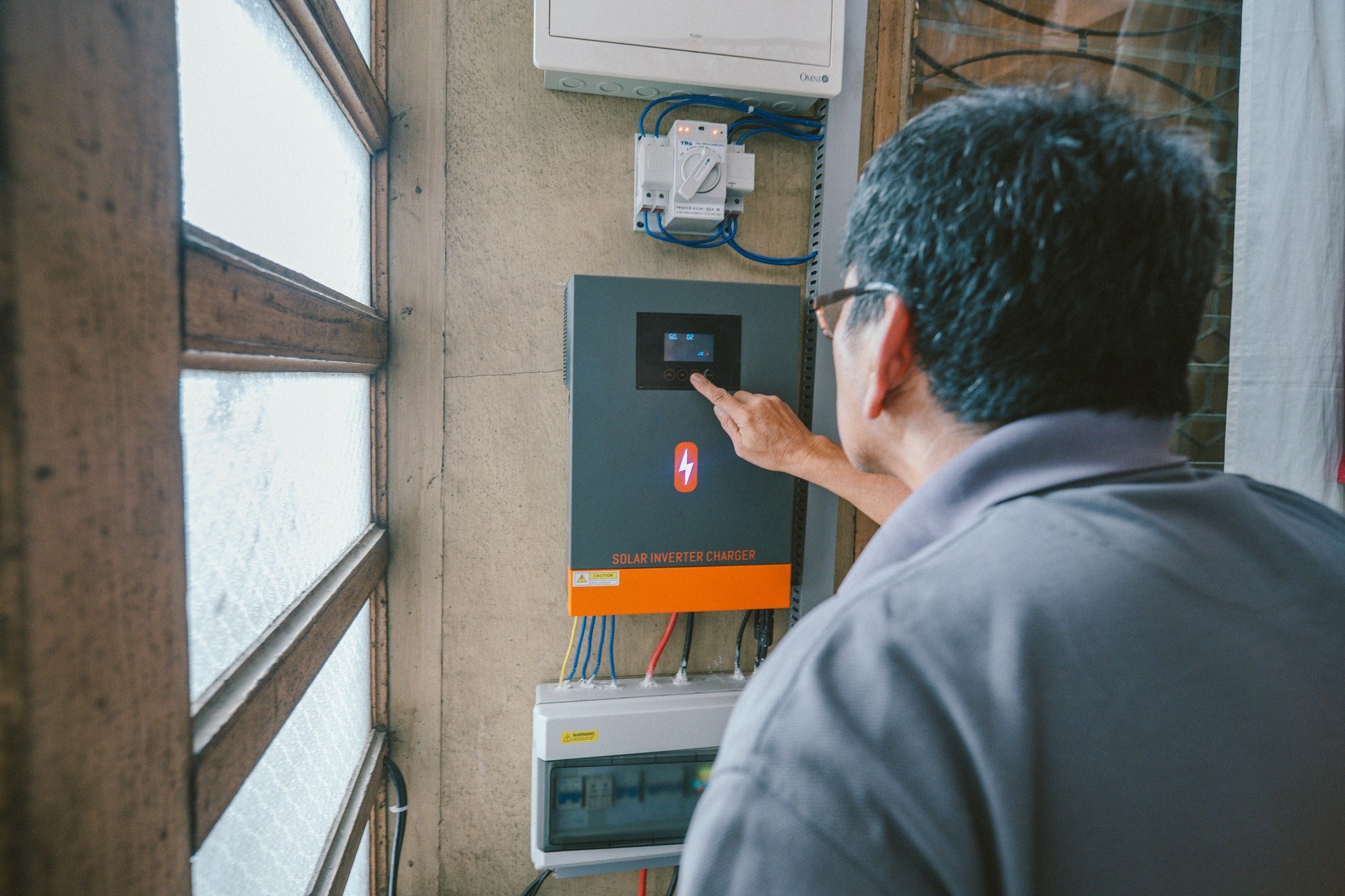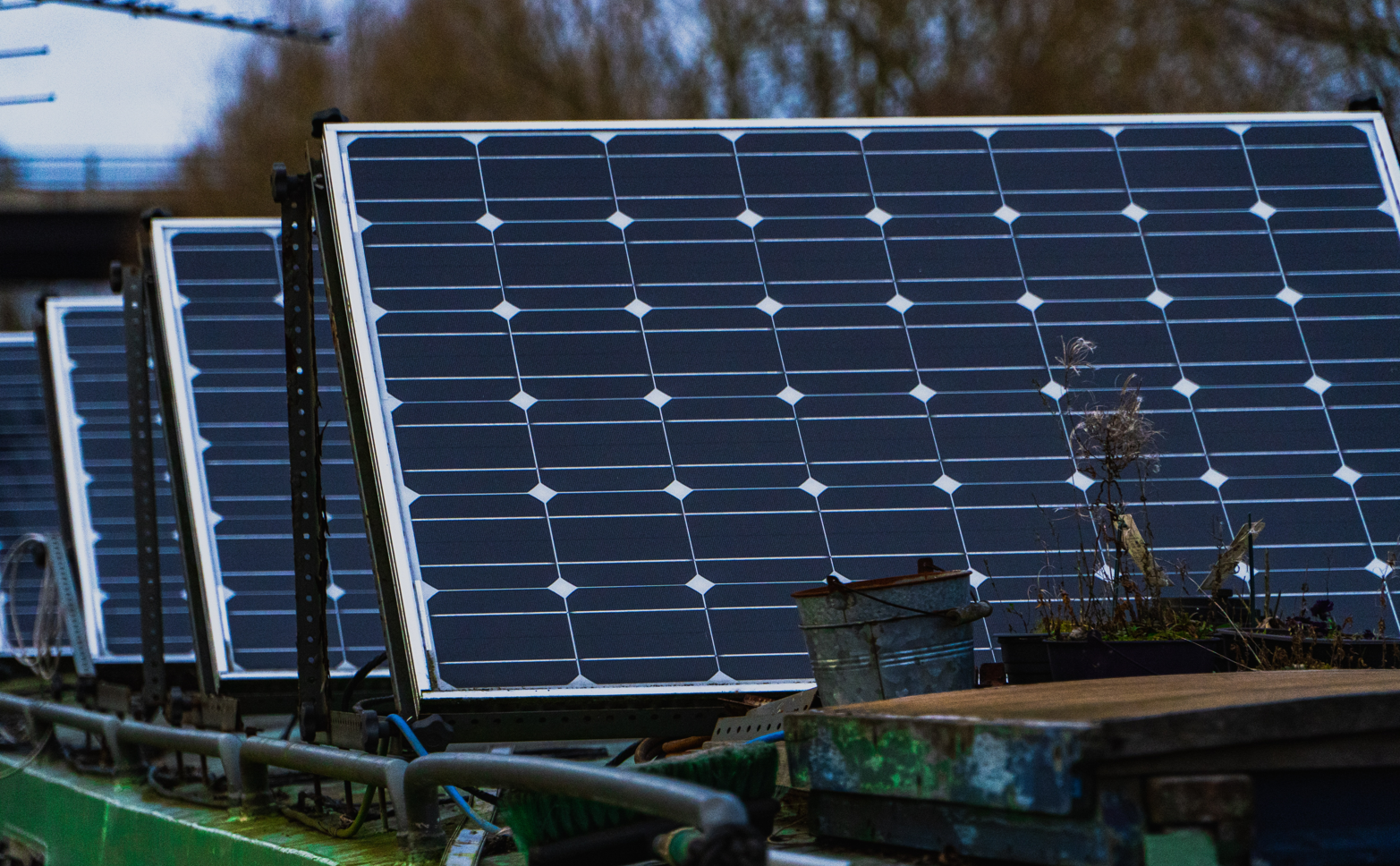เมื่อพบปัญหาการทำงานผิดปกติของอินเวอร์เตอร์ การรีเซ็ตอินเวอร์เตอร์เป็นวิธีการที่ผู้ใช้มักจะนึกถึง อย่างไรก็ตาม ในความเป็นจริง นี่เป็นวิธีการแก้ไขปัญหาที่กว้างขวางและไม่มีขั้นตอนมาตรฐาน เนื่องจากวิธีการรีเซ็ตอาจแตกต่างกันไปตามแบรนด์และรุ่นของอินเวอร์เตอร์ต่างๆ ที่นี่เราจะนำเสนอขั้นตอนทั่วไปและข้อควรพิจารณาที่ควรคำนึงถึงเมื่อทำการรีเซ็ตอินเวอร์เตอร์.
รีเซ็ตหมายถึงอะไรในอินเวอร์เตอร์
ในบริบทของอินเวอร์เตอร์ การรีเซ็ตหมายถึงกระบวนการของ การคืนค่า การตั้งค่าหรือการทำงานของอินเวอร์เตอร์กลับสู่สถานะเริ่มต้นหรือค่าเริ่มต้น มักใช้เป็นขั้นตอนในการแก้ปัญหาเพื่อลดปัญหาหรือข้อผิดพลาดในการทำงานของอินเวอร์เตอร์.
โดยทั่วไปมีการรีเซ็ตสองประเภทในอินเวอร์เตอร์: รีเซ็ตแบบนุ่มและรีเซ็ตแบบแข็ง.
วิธีที่ 1 - รีเซ็ตอ่อนอินเวอร์เตอร์
การรีเซ็ตแบบนุ่มนวล ซึ่งเรียกว่า การรีเซ็ตซอฟต์แวร์หรือการบูตใหม่ เกี่ยวข้องกับการเริ่มต้นซอฟต์แวร์หรือระบบควบคุมของอินเวอร์เตอร์ใหม่โดยไม่กระทบต่อส่วนประกอบฮาร์ดแวร์
"เครื่องแปลงไฟฟ้าพลังงานแสงอาทิตย์ขั้นสูงหลายรุ่นในปัจจุบันรองรับการรีเซ็ตแบบนุ่มนวล ซึ่งหมายความว่าเครื่องแปลงไฟฟ้าสามารถรีเซ็ตได้โดยการ กำหนดค่าระบบ ของมันเอง."
ในการรีเซ็ตแบบนุ่ม การตั้งค่าและการกำหนดค่าของอินเวอร์เตอร์จะถูกเก็บรักษาไว้ แต่ซอฟต์แวร์และระบบควบคุมจะถูกรีเฟรช การรีเซ็ตแบบนุ่มมักใช้ในการแก้ไขปัญหาหรือข้อบกพร่องที่เกี่ยวข้องกับซอฟต์แวร์เล็กน้อย.
ขั้นตอนการรีเซ็ตอินเวอร์เตอร์แบบอ่อน
นี่คือวิธีที่คุณสามารถทำการรีเซ็ตแบบนุ่มนวล:
-
ให้ความสำคัญกับความปลอดภัย
ทำความคุ้นเคยกับคู่มือและสวมใส่อุปกรณ์ป้องกัน. -
ตัดการเชื่อมต่อไฟฟ้า AC/DC
ปิดสวิตช์หลักสำหรับไฟฟ้า AC และ DC ถ้ามีการใช้งาน -
รอ
ให้ตัวแปลงสัญญาณปล่อยประจุและรีเซ็ตเป็นเวลาสักครู่ -
ต่อไฟใหม่
รีเซ็ตเบรกเกอร์หรือสวิตช์เพื่อคืนพลังงาน AC/DC -
เปิดพลังงานที่อินเวอร์เตอร์
ปฏิบัติตามคำแนะนำของผู้ผลิตเพื่อเปิดใช้งานมัน -
สังเกต
ตรวจสอบรหัสข้อผิดพลาด ไฟเตือน หรือพฤติกรรมที่ผิดปกติ -
ตรวจสอบประสิทธิภาพการทำงาน
เฝ้าดูระบบเพื่อให้แน่ใจว่าทำงานได้อย่างเหมาะสม. -
หากจำเป็นให้ขอความช่วยเหลือจากผู้เชี่ยวชาญ
โปรดดูคู่มือหรือติดต่อผู้ผลิตเพื่อขอความช่วยเหลือ.
วิธีที่ 2 - รีเซ็ตอินเวอร์เตอร์
การรีเซ็ตแบบฮาร์ด หรือที่เรียกว่า การรีเซ็ตจากโรงงาน หรือการรีเซ็ตระบบ หมายถึงการคืนค่าอินเวอร์เตอร์กลับไปยังการตั้งค่าโรงงานเดิม รวมถึง ทั้ง การตั้งค่าซอฟต์แวร์และฮาร์ดแวร์.
มัน ลบการตั้งค่าที่ผู้ใช้กำหนด ข้อมูล และการกำหนดค่าทั้งหมดที่เก็บไว้ในหน่วยความจำของอินเวอร์เตอร์ โดยพื้นฐานแล้วจะทำให้มันกลับสู่สถานะเริ่มต้นเหมือนกับว่าเป็นของใหม่.
การรีเซ็ตแบบ Hard มักจะทำเมื่อมีปัญหาหรือความผิดปกติที่สำคัญกับอินเวอร์เตอร์ หรือเมื่อมีความจำเป็นต้องลบการปรับแต่งทั้งหมดและเริ่มต้นใหม่.
ขั้นตอนการรีเซ็ตอินเวอร์เตอร์
นี่คือวิธีที่คุณสามารถทำการรีเซ็ตแบบเต็มได้:
-
ให้ความสำคัญกับความปลอดภัย
ทำความคุ้นเคยกับคู่มือและสวมใส่อุปกรณ์ป้องกัน. -
ตัดการเชื่อมต่อไฟฟ้า AC/DC
ปิดสวิตช์หลักสำหรับไฟฟ้า AC และ DC ถ้ามีการใช้งาน -
รอ
ให้ตัวแปลงสัญญาณปล่อยประจุและรีเซ็ตเป็นเวลาสักครู่ -
ต่อไฟใหม่
รีเซ็ตเบรกเกอร์หรือสวิตช์เพื่อคืนพลังงาน AC/DC -
เปิดพลังงานที่อินเวอร์เตอร์
ปฏิบัติตามคำแนะนำของผู้ผลิตเพื่อเปิดใช้งานมัน -
สังเกต
ตรวจสอบรหัสข้อผิดพลาด ไฟเตือน หรือพฤติกรรมที่ผิดปกติ -
ตรวจสอบประสิทธิภาพการทำงาน
เฝ้าดูระบบเพื่อให้แน่ใจว่าทำงานได้อย่างเหมาะสม. -
หากจำเป็นให้ขอความช่วยเหลือจากผู้เชี่ยวชาญ
โปรดดูคู่มือหรือติดต่อผู้ผลิตเพื่อขอความช่วยเหลือ.
หลังจากทำการรีเซ็ตแบบเต็มที่แล้ว อินเวอร์เตอร์จะถูกคืนค่าเป็นค่าเริ่มต้นจากโรงงาน คุณจะต้อง กำหนดค่าใหม่ การตั้งค่าที่กำหนดเอง เช่น แรงดันไฟฟ้าหรือความถี่ หากจำเป็น โปรดทราบว่าการรีเซ็ตแบบเต็มควรทำด้วยความระมัดระวัง เนื่องจากจะลบการตั้งค่าและข้อมูลของผู้ใช้ทั้งหมด
โปรดทราบว่าขั้นตอนเฉพาะสำหรับการทำการรีเซ็ตแบบนุ่มและการรีเซ็ตแบบแข็งอาจแตกต่างกันไปขึ้นอยู่กับ ผู้ผลิต และ รุ่น ของอินเวอร์เตอร์.
แนะนำให้ปรึกษาคู่มือผู้ใช้ของอินเวอร์เตอร์หรือ ติดต่อฝ่ายสนับสนุนลูกค้าของผู้ผลิตเพื่อขอคำแนะนำโดยละเอียดเกี่ยวกับวิธีการรีเซ็ตที่เฉพาะเจาะจงสำหรับอุปกรณ์ของคุณ.
คำถามที่พบบ่อยเกี่ยวกับการรีเซ็ตอินเวอร์เตอร์
อินเวอร์เตอร์มีปุ่มรีเซ็ตไหม?
ใช่ โดยทั่วไปแล้ว อินเวอร์เตอร์จะมีปุ่มรีเซ็ต ปกติแล้ว ปุ่มเปิด/ปิดจะช่วยให้ผู้ใช้สามารถรีเซ็ตหรือเริ่มต้นใหม่อินเวอร์เตอร์ได้ อย่างไรก็ตาม สิ่งสำคัญคือต้องทราบว่าการมีอยู่และฟังก์ชันการทำงานของปุ่มรีเซ็ตอาจแตกต่างกันไปขึ้นอยู่กับ ผู้ผลิต และ รุ่น ของอินเวอร์เตอร์พลังงานแสงอาทิตย์
กดและค้างปุ่ม ON/OFF เป็นเวลา 15 วินาที รอให้ไฟ LED ชาร์จกระพริบอย่างรวดเร็ว และถึงเวลาที่จะรีเซ็ตอินเวอร์เตอร์ อินเวอร์เตอร์ไฟฟ้าอาจมีฟังก์ชันต่างๆ รวมถึงปุ่มที่อนุญาตให้ผู้ใช้รีเซ็ตหากประสบปัญหาไฟฟ้า หากอินเวอร์เตอร์ไม่ได้ถูกรีเซ็ตอย่างถูกต้องหลังการใช้งาน อาจยังคงจ่ายไฟให้กับอุปกรณ์แม้ว่าจะไม่จำเป็นจริงๆ ซึ่งอาจส่งผลให้เกิดอันตรายร้ายแรงหรือแม้กระทั่งเสียชีวิตได้ ดังนั้น อินเวอร์เตอร์ไฟฟ้าควรถูกรีเซ็ตอย่างถูกต้องหลังการใช้งานเสมอเพื่อหลีกเลี่ยงอันตรายด้านความปลอดภัยใดๆ
การรีเซ็ตอินเวอร์เตอร์ใช้เวลานานแค่ไหน?
เวลาที่ใช้ในการรีเซ็ตอินเวอร์เตอร์อาจแตกต่างกันไปขึ้นอยู่กับปัจจัยต่าง ๆ เช่น รุ่น, วงจร, และความซับซ้อนของกระบวนการรีเซ็ต โดยทั่วไปแล้ว เวลาที่ใช้ในการรีเซ็ตจะค่อนข้างสั้น.
สำหรับการรีเซ็ตแบบนุ่มนวล, ซึ่งเกี่ยวข้องกับการปิดและเปิดเครื่องอย่างง่าย, มักจะ ใช้เวลาเพียงไม่กี่วินาที. หลังจากปิดอินเวอร์เตอร์, อาจต้องรอสั้น ๆ ก่อนที่จะเปิดเครื่องอีกครั้งเพื่อให้ประจุที่เหลืออยู่หมดไป.
สำหรับการรีเซ็ตแบบยากหรือการรีเซ็ตจากโรงงาน ซึ่งจะคืนค่าการตั้งค่าเริ่มต้น ระยะเวลาอาจแตกต่างกันไป อาจใช้เวลานานกว่า เนื่องจาก อินเวอร์เตอร์จะลบการกำหนดค่าที่ผู้ใช้กำหนดและคืนค่าการตั้งค่าโรงงาน เวลาที่แน่นอนขึ้นอยู่กับขั้นตอนการรีเซ็ตและฮาร์ดแวร์และซอฟต์แวร์เฉพาะที่เกี่ยวข้อง.
เพื่อค้นหาข้อมูลที่ถูกต้องเกี่ยวกับเวลาการรีเซ็ตสำหรับรุ่นอินเวอร์เตอร์เฉพาะ ให้ปรึกษา เอกสารของผู้ผลิต คู่มือผู้ใช้ หรือ ติดต่อ ฝ่ายบริการลูกค้าของพวกเขาสำหรับคำแนะนำและรายละเอียด.
ทำไมเครื่องแปลงไฟของฉันถึงไม่ทำงาน?
อาจเกิดจาก สาเหตุต่อไปนี้ รวมถึงไฟฟ้าจากกริดขัดข้อง, แบตเตอรี่หมด, อินเวอร์เตอร์ตัดการทำงาน, แบตเตอรี่หลุด, ขั้วแบตเตอรี่หลวม, แบตเตอรี่ต่ำ, แบตเตอรี่หมดหรือขั้วแบตเตอรี่กลับด้าน เป็นต้น.
หากเครื่องแปลงไฟฟ้ามีแนวโน้มที่จะล้มเหลวเนื่องจากขาดพลังงาน ก็ถึงเวลาที่จะตรวจสอบว่าไฟฟ้าจากกริดขัดข้องหรือไม่ ดังนั้นเครื่องแปลงไฟฟ้าอาจไม่สามารถดึงพลังงานจากกริดได้ หากสวิตช์ไฟฟ้ามีข้อบกพร่อง คุณต้องนำไปที่ศูนย์บริการเพื่อซ่อมแซม แน่นอนว่ายังมีเครื่องแปลงไฟฟ้าที่อาจล้มเหลวเนื่องจากปัญหาทางกล อีกหนึ่งความเป็นไปได้คือเมื่อเวลาผ่านไป เครื่องแปลงไฟฟ้าอาจเริ่มล้มเหลวเนื่องจากการเสื่อมสภาพ การสึกหรอ หรือการกัดกร่อน.
เมื่อเครื่องแปลงไฟของคุณหยุดทำงาน อาจทำให้รู้สึกหงุดหงิดได้ อย่าลืมไปพบผู้เชี่ยวชาญที่ศูนย์บริการเพื่อแก้ไขปัญหา ด้วยการทำเช่นนี้ คุณจะหลีกเลี่ยงอันตรายที่อาจเกิดขึ้นและความเสียหายที่อาจเกิดขึ้นกับบ้านของคุณ.
ฉันจะทดสอบอินเวอร์เตอร์ของฉันได้อย่างไร?
อินเวอร์เตอร์คืออุปกรณ์ที่แปลงกระแสสลับเป็นกระแสตรง คุณภาพของอินเวอร์เตอร์ไฟฟ้าจะขึ้นอยู่กับความสามารถในการสร้างกระแสตรงที่สะอาดและเชื่อถือได้ หากคุณต้องการทดสอบคุณภาพของเอาต์พุตของอินเวอร์เตอร์ไฟฟ้า คุณสามารถใช้ มิเตอร์แอมแปร์หรือมิเตอร์พลังงาน เพื่อวัดกระแสที่ไหลผ่านมันในขณะใดขณะหนึ่ง.
ในการทดสอบอินเวอร์เตอร์ ให้เริ่มจากการกำหนดประเภทของไฟฟ้ากระแสสลับที่อินเวอร์เตอร์จะจ่าย ไฟฟ้ากระแสสลับสามารถเป็น 6V, 12V, 24V หรือ 48V กำหนดกำลังวัตต์ของแหล่งจ่ายไฟฟ้ากระแสสลับโดยการคูณโวลต์กับแอมป์ ตัวอย่างเช่น หากอินเวอร์เตอร์จะจ่ายไฟให้กับหลอดไฟที่ใช้ไฟฟ้ากระแสสลับ 100 วัตต์ มันต้องเสียบเข้ากับเต้ารับไฟฟ้าที่จ่ายไฟฟ้ากระแสสลับ 1200 วัตต์ หากมันทำงานได้ตามปกติ แสดงว่าไม่มีปัญหากับอินเวอร์เตอร์.



